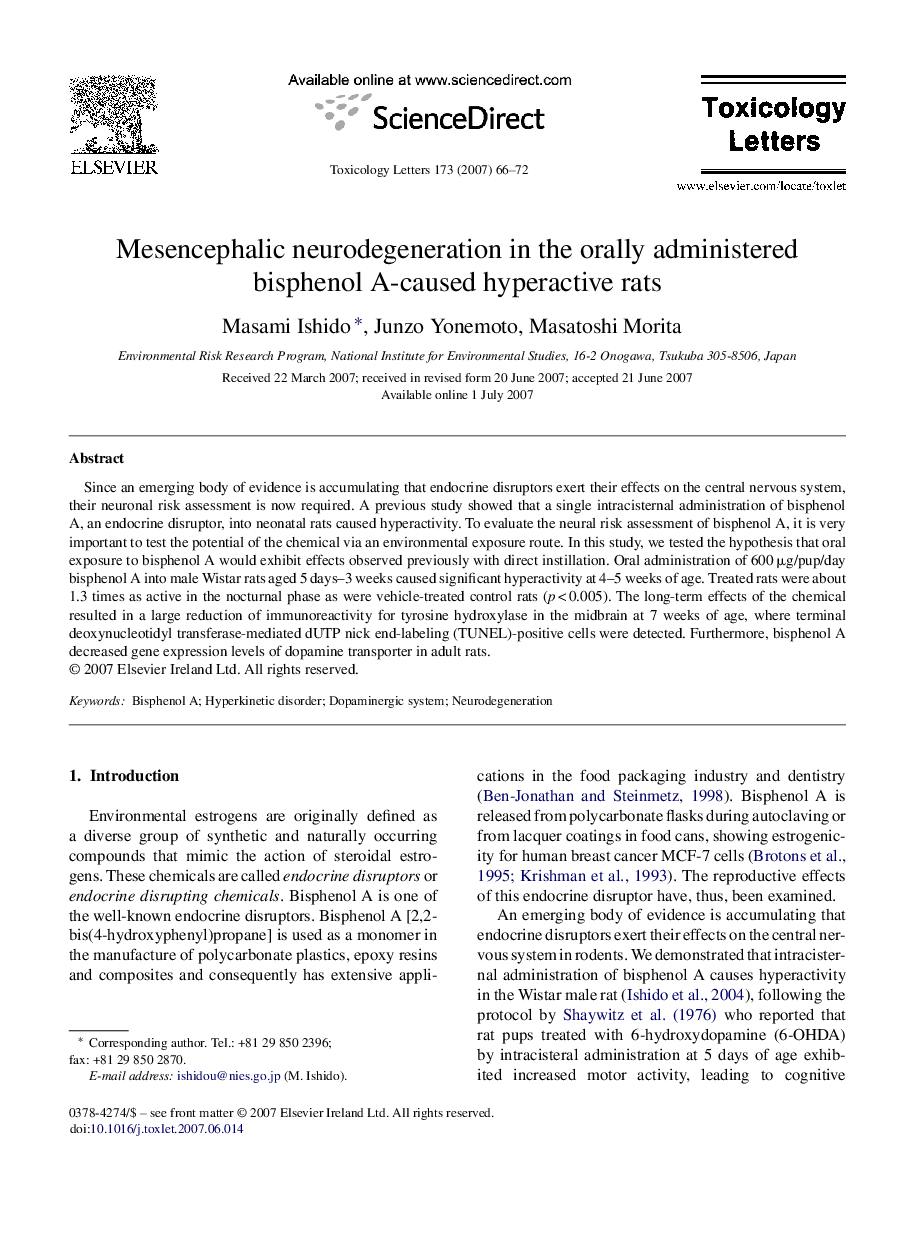| Article ID | Journal | Published Year | Pages | File Type |
|---|---|---|---|---|
| 2601992 | Toxicology Letters | 2007 | 7 Pages |
Since an emerging body of evidence is accumulating that endocrine disruptors exert their effects on the central nervous system, their neuronal risk assessment is now required. A previous study showed that a single intracisternal administration of bisphenol A, an endocrine disruptor, into neonatal rats caused hyperactivity. To evaluate the neural risk assessment of bisphenol A, it is very important to test the potential of the chemical via an environmental exposure route. In this study, we tested the hypothesis that oral exposure to bisphenol A would exhibit effects observed previously with direct instillation. Oral administration of 600 μg/pup/day bisphenol A into male Wistar rats aged 5 days–3 weeks caused significant hyperactivity at 4–5 weeks of age. Treated rats were about 1.3 times as active in the nocturnal phase as were vehicle-treated control rats (p < 0.005). The long-term effects of the chemical resulted in a large reduction of immunoreactivity for tyrosine hydroxylase in the midbrain at 7 weeks of age, where terminal deoxynucleotidyl transferase-mediated dUTP nick end-labeling (TUNEL)-positive cells were detected. Furthermore, bisphenol A decreased gene expression levels of dopamine transporter in adult rats.
